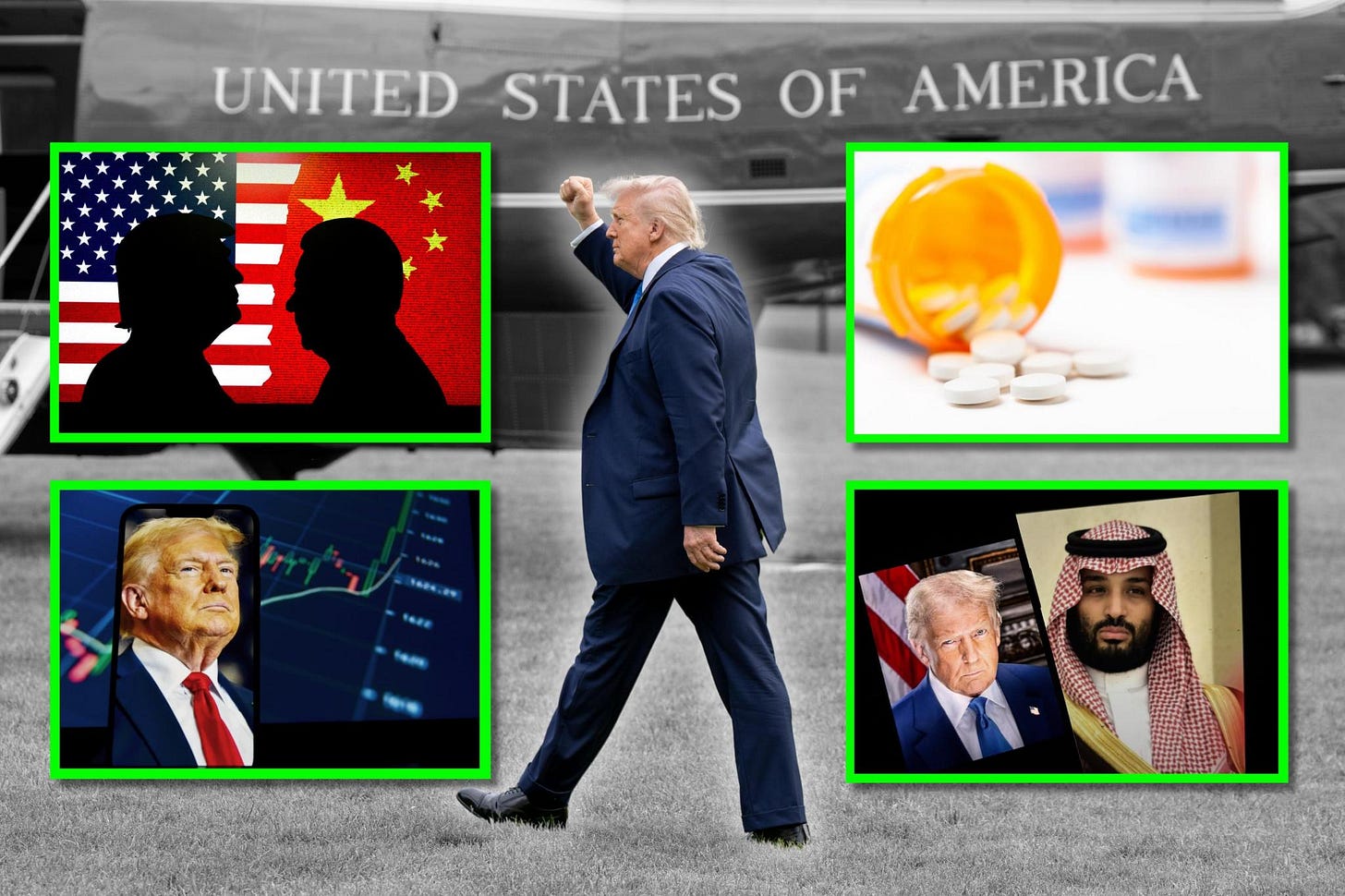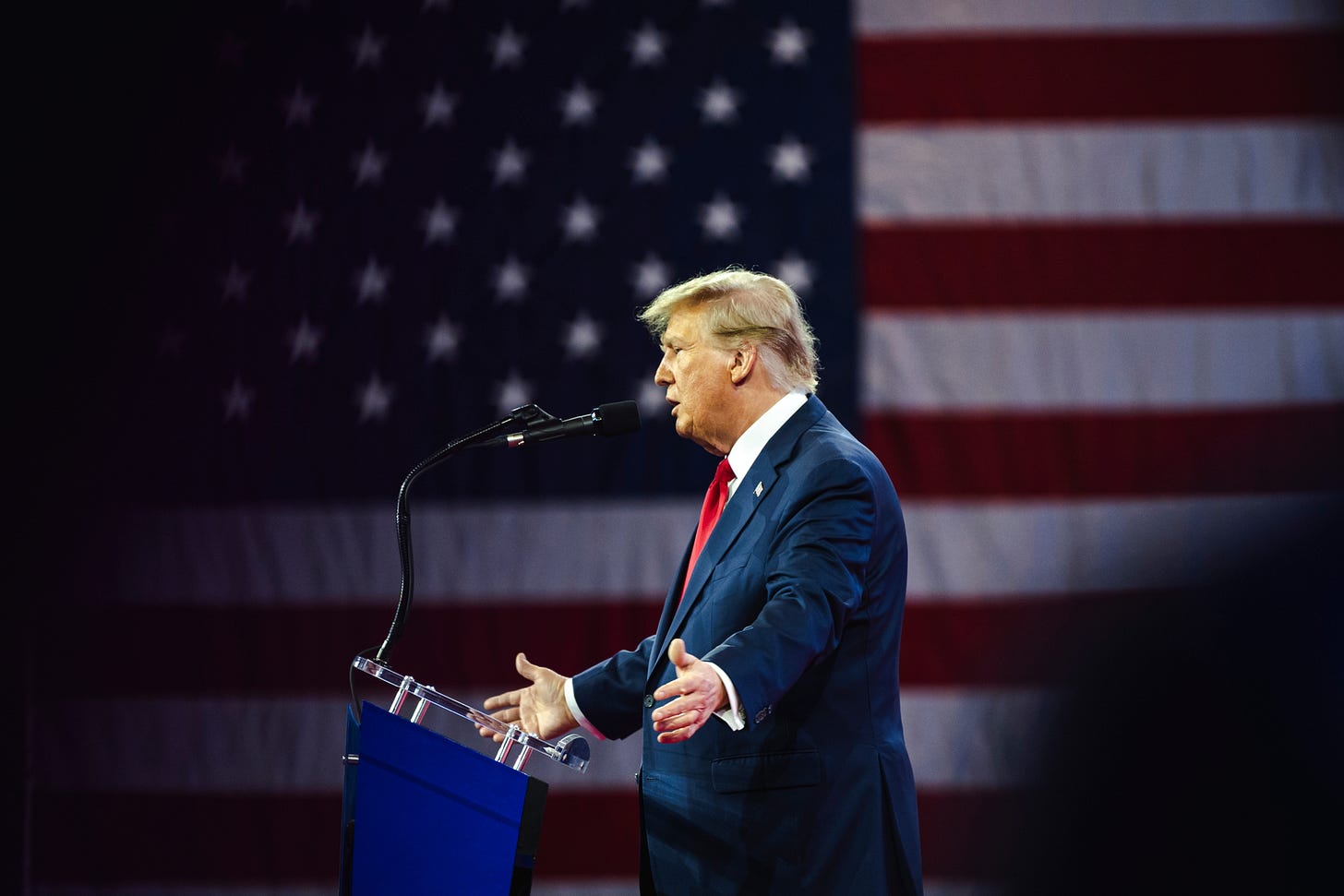The Most Transformational Week of the Trump Presidency
After four years of Biden sleepwalking through history, Trump pulled off in seven days what would take most presidents two full terms.
It started with chaos.
In Kashmir, Islamist militants launched a violent terror attack that killed 26 civilians. India wasted no time in responding—strikes hit targets in Pakistan, and tensions began rising fast.
The nightmare scenario was unfolding: two nuclear-armed countries sliding toward war.
While headlines swirled and panic built, something was already in motion behind the scenes.
Without warning, Trump made the announcement:
“After a long night of talks mediated by the United States, I am pleased to announce that India and Pakistan have agreed to a FULL AND IMMEDIATE CEASEFIRE. Congratulations to both Countries on using Common Sense and Great Intelligence.”
Just like that, the momentum toward war snapped.
What looked like an unstoppable chain reaction of violence was over before it began.
It was a quiet, high-stakes diplomatic win—and a sign of what was coming.
Before the dust settled, Trump made another move—this time at home, and it hit Big Pharma where it hurts.
At a press conference flanked by his health team, he signed what he called the most aggressive executive order on drug pricing in American history.
It was a direct challenge to Big Pharma’s global pricing scheme, and it came with a clear message: the days of U.S. patients paying for the rest of the world are over.
“Starting today, the United States will no longer subsidize the health care of foreign countries, which is what we were doing,” he said.
“We were subsidizing others health care, countries where they paid a small fraction of what for the same drug that what we pay many, many times more for.”
The way he told it, the greed wasn’t just coming from drug companies. It was being pushed by foreign governments taking advantage of the U.S. system.
“And will no longer tolerate profiteering and price gouging from Big Pharma,” he added.
“But again, it was really the countries that forced Big Pharma to do things that frankly, I'm not sure they really felt comfortable doing, but they've gotten away with it, these countries, European Union has been brutal, brutal.”
He made it clear that this wasn’t just about cutting costs—it was about putting America first in a global racket that had gone unchallenged for decades.
“So for the first time in many years, we’ll slash the cost of prescription drugs and we will bring fairness to America.”
Then came the numbers that left an impression.
“If you think of a drug that is sometimes ten times more expensive, it’s much more than the 59%... but between 59 and 80 and I guess even 90%.”
That wasn’t just reform, it was a full-scale rebellion against the pharmaceutical status quo.
Simultaneously, Trump’s team was already making headlines in Geneva.
This time on trade.
Treasury Secretary Scott Bessent stood before cameras and announced something few expected to hear—America and China had struck a deal.
“We have reached an agreement on a 90-day pause, and substantially moved down the tariff levels.”
What followed was one of the most dramatic rollbacks in trade war history.
→ U.S. tariffs on Chinese goods drop from 145% to 30%
→ China’s tariffs on U.S. products plunge from 125% to 10%
→ “Both sides, on the reciprocal tariffs, will move their tariffs down 115%.”
The numbers alone would’ve made headlines, but Bessent reiterated something deeper—a shift in tone, and a shared commitment to rebalancing trade.
“We had very robust discussions, both sides showed great respect,” he said.
“It was a chance for me to meet the Chinese delegation.”
He described the outcome as mutual progress.
“Both countries represented their national interests very well. We concluded that we have shared interest and we both have an interest in balanced trade. The U.S. will continue moving towards that.”
Just like that, a the trade war was deescalated—and a path toward cooperation reopened.
The markets reacted immediately.
With the ink still drying on the trade deal, Trump boarded Air Force One and set out to a region he’d long said was due for a reckoning: the Middle East.
His trip took him to Saudi Arabia, Qatar, and the United Arab Emirates.
But this wasn’t just another diplomatic tour, this was the beginning of a new era.
From the moment he stepped onto the stage in Riyadh, it was clear—Trump wasn’t there to repeat the mistakes of the past.
He was there to make peace and forge new alliances.
At the U.S.-Saudi Investment Forum, he opened with a message not just to the Gulf states, but to the entire global establishment.
“It is crucial for the wider world to know this great transformation has not come from western interventionalists or flying people in beautiful planes giving you lectures on how to live and how to govern your own affairs.”
The critique was scorching, and it kept going.
“No, the gleaming marvels of Riyadh and Abu Dhabi, were not created by the so-called nation builders, Neocons or liberal nonprofits like those who spent trillions and trillions of dollars failing to develop Kabul, Baghdad, so many other cities.”
The message was simple: America’s new foreign policy wouldn’t be driven by ideology.
It would be driven by respect—and results.
“...the people that are right here. The people that have lived here all their lives developing your own sovereign countries, pursuing your own unique visions and charting your own destinies in your own way.”
He didn’t just reject interventionism—he condemned it outright.
“In the end the so-called nation builders wrecked far more nations than they built and the interventionalists were intervening in complex societies that they didn't understand themselves. They told you how to do it but they had no idea how to do it themselves.”
And when it came to what real progress looks like, Trump pointed to tradition—not transformation.
“Peace, prosperity and progress came not from a radical rejection of your heritage but rather from embracing your national traditions and embracing that same heritage that you love so dearly.”
In the audience, his close friend Crown Prince Mohammed bin Salman and Elon Musk applauded.
The shift in tone was unmistakable.
The most concrete results weren’t words—they were numbers.
As Trump moved from one Gulf nation to another, the deals started stacking up. And by the end of the week, the totals were staggering.
This was The Art of the Deal in action.
→ $600 billion of commitment in investments from Saudi Arabia, which will lead to hundreds of thousands in the United States.
→ $1.2 trillion agreement with Qatar to generate an economic exchange with the United States.
→ The sale of up to 210 American-made Boeing aircrafts to Qatar Airways.
→ An agreement for GE Aerospace to supply more than 400 engines to power the Boeing planes.
→ $200 billion in U.S.-United Arab Emirates commercial deals.
Every handshake came with jobs, capital, and strategic leverage—brought home to the United States.
This week was a reminder of the transformational force America just sent back to the White House.
A war averted. A corrupt healthcare system exposed. A trade war cooled. Foreign policy rewritten. Trillions in new investment on the table.
This wasn’t politics as usual, it was a TOTAL reset.
No lectures about “norms.” No hollow slogans.
Just one week where history shifted—and President Trump moved with it.





Dear President Trump,
We love your line about God doing the judging, and you doing the defending.
But America has enemies other than economic and military ones. It's most serious one is the Lie now infesting all levels of elite leadership, especially Dem leadership, but extending into much of the conservative and Trumpist leadership also. It is the Lie which pretends that the Covid-vax Catastrophe, which has taken the lives of at least a million or so, and inflicted chronic disease upon at least tens of millions, never happened, and that our mainstream politicians and media have no duty to talk about it, just as they never had a duty to talk about Biden's cognitive decline.
A Lie like that, tolerated and encouraged, and so much so that it becomes a veritable requirement for elite-class membership, can damage a nation more than any illegal drug, or any natural disease. It might even be a greater threat than the illegal immigrant invasion. For it corrupts every institution, tempts every ambitious young American to make peace with it, and thumbs its nose at the basic principles of our once-great nation.
We do not ask you to Judge. Let it be the American citizens who run the Reckoning, legal, reputational, and otherwise, needed to hold the huge cohorts of scoundrels who allowed this catastrophe to happen, and who Suppress the truth about it to this day, accountable.
We will never, however, allow the price of all the good you are doing for us, be our letting down our defenses on this one issue, which might be slightly embarrassing to yourself. These jabs Kill and this Lie Corrupts.
Sincerely,
One of Your Supporters
Beautifully written and a major positive move forward for 'US'!